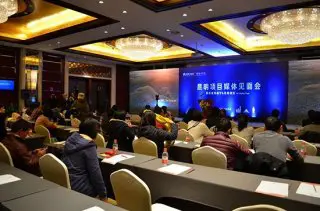Written by APD writer Shi Jiangyue
Translated by Deng Xianlai
When Chinese state media, including broadcaster CCTV and the military’s official People’s Liberation Army (PLA) Daily, reported Thursday about a massive display of the Chinese navy’s combat capability, both Chinese domestic audience and international media paid close attention to the news.
Reviewing the Chinese navy in the South China Sea, Chinese President Xi Jinping, who as Chairman of the Communist Party of China Central Military Commission is also the commander-in-chief of the country’s armed forces, was saluted by over 10,000 service members amid the roaring of 48 warships and submarines as well as 76 fighter jets.
According to CCTV footage, on exhibition are all independently developed battleships that currently serve as the mainstay of China’s naval force. They include the aircraft carrier Liaoning, amphibious landing vessels, a raft of newly updated nuclear-powered submarines, missile frigates, electronic reconnaissance ships, supply ships, and hospital ships.
The navy review is the largest in scale both in the history of the People’s Republic of China and since the founding of the PLA Navy. What also makes it a milestone is that it’s the first time an aircraft carrier is involved, and that the total tonnage of the participating ships is the largest to date as well.
Such an inspection of China’s naval force is nothing beyond overseas media’s anticipation. Reports emerged as early as late March that satellite images illustrated a grand Chinese flotilla comprising more than 40 warships. What has caught the media off guard, however, is that it is only recently that the silent strengthening of the PLA’s naval might has been brought into the international spotlight.
Over the past month or so, for example, the PLA Navy has successively conducted drills in the West Pacific, both in the air and on the sea. Observers reckon that while Thursday’s review is a show of force by the Chinese navy, the ever increasing rounds of routine trainings and drills imply that the navy is unremittingly engaging in enhancing its combat capability during peace time.
Apparently, the sheer number of advanced vessels and aircraft is not the sole parameter for evaluating combat capability. What’s more important is that the Chinese navy has now come to realize the effectiveness of improving combat capability through intensifying trainings.
What is considered to be real progress is the advancement in the soft powers that will enable the Chinese navy to act promptly when faced with contingencies. Such soft powers are manifested in the abilities to command battles, operate vessels, and organize combat formations, among others.
Indeed, state-of-the-art battleships will not only better prepare the fleets for wars, but also reduce the need for maintenance. Moreover, they will guarantee sufficient personnel training so that the marines are well adapted to operating the ships under various circumstances and familiar with the vessels’ strengths and shortcomings.
On top of that, frequent inter-ship and ship-aircraft coordination maneuvers have also raised awareness among overseas China watchers of the Chinese navy’s substantial development. These, however, are nothing new either, given that the South Sea Fleet, East Sea Fleet and North Sea Fleet have conducted joint war games with each other for many times.
Chinese military fans have likened the presence of many of the navy’s combat ships in the latest review to what they call “dumpling dropping,” the act of putting dumplings -- usually in big numbers -- into a pot containing boiling water to have them cooked.
China in recent years has undeniably outpaced other countries in the building of warships in terms of both quantity and variety. The country’s top leadership has vowed to achieve comprehensive modernization of national defense and the armed forces by 2035, lifting the PLA to the world’s top rank.
That all said, the gap between China and the current maritime superpowers remains starkly obvious. For the time being, not only does the Chinese navy lag behind in both the number and sophistication of carriers and shipboard aircraft, it also lacks experience in sailing and combating in remote areas of oceans.
In that regard, “dumpling dropping” should by no means render the self-confident Chinese navy complacent.
(ASIA PACIFIC DAILY)
 简体中文
简体中文

